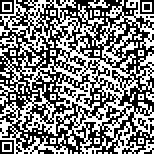| 本文已被:浏览 1335次 下载 1271次 |

码上扫一扫! |
|
|
| 青海湖裸鲤的游泳能力及鱼梯通过效果 |
|
李新丹1,2, 肖新平2, 周卫国3, 罗江2, 周杨浩2,4, 荣义峰1,2, 祁洪芳3, 史建全3, 杜浩1,2,3,4
|
|
1.上海海洋大学海洋科学学院 上海 201306;2.中国水产科学研究院长江水产研究所 农业农村部淡水生物多样性保护重点实验室 湖北 武汉 430223;3.青海湖裸鲤繁育与保护重点实验室 青海 西宁 810016;4.华中农业大学 湖北 武汉 430070
|
|
| 摘要: |
| 本研究采用递增流速法对青海湖裸鲤(Gymnocypris przewalskii)野生洄游群体和人工养殖 1龄、2龄群体的临界游泳速度进行测试,采用固定流速法和人工模拟鱼梯对野生群体的克流能力进行评估。结果显示,野生洄游组的绝对临界游泳速度(Ucrit) (35.73±6.56) cm/s与养殖1龄组(31.66±9.97) cm/s相比差异不显著(P>0.05),但显著低于养殖2龄组(57.77±10.25) cm/s (P<0.01)。比较分析表明,养殖1龄组(3.25±1.42) BL/s、养殖2龄组(2.71±0.61) BL/s和野生洄游组(1.71±0.35) BL/s的相对临界游泳速度(U′crit)随体长和年龄的增加呈下降趋势(P<0.01)。野生洄游组雄鱼的U′crit (1.96±0.27) BL/s显著高于雌鱼(1.54±0.31) BL/s (P<0.01),而养殖1龄组和养殖2龄组中不同性别间无显著差异(P>0.05)。青海湖裸鲤野生群体在高流速100 cm/s时的持续游泳时间极短(27.67±5.67) s,持续游泳时间与水流速度呈显著负相关(P<0.01)。野生洄游群体在3级不同鱼梯的通过率差异显著(P<0.01),最低通过率仅为36%。本研究表明,青海湖裸鲤作为高海拔、高盐碱环境的典型冷水性鱼类,其游泳能力相对较弱,在洄游过程中更容易受到水坝等障碍的影响。本研究结果可为今后鱼梯设计和优化及青海湖裸鲤洄游群体保护提供基础数据。 |
| 关键词: 青海湖裸鲤 临界游泳速度 洄游障碍 鱼梯 |
| DOI:10.19663/j.issn2095-9869.20201207004 |
| 分类号: |
| 基金项目: |
|
| Swimming Capacity of Gymnocypris przewalskii and the Efficiency of Fish Passing the Fish Ladder |
|
LI Xindan1,2, XIAO Xinping2, ZHOU Weiguo3, LUO Jiang2, ZHOU Yanghao2,4, RONG Yifeng1,2, QI Hongfang3, SHI Jianquan3, DU Hao1,2,3,4
|
|
1.College of Marine Sciences, Shanghai Ocean University, Shanghai 201306, China;2.Key Laboratory of Freshwater Biodiversity Conservation, Ministry of Agriculture, Chinese Academy of Fishery Sciences, Wuhan, Hubei 430223, China;3.Qinghai Naked Carp Rescue Center, Xining, Qinghai 810016, China;4.Huazhong Agricultural University, Wuhan, Hubei 430070, China
|
| Abstract: |
| The increasing velocity method was adopted to test critical swimming speed of Gymnocypris przewalskii using a wild migratory group and cultured groups of the ages of 1 and 2 years old, and then the fixed velocity method was used to test the swimming endurance of G. przewalskii. Finally, we simulated a three-stage fish ladder and calculated and analyzed the efficiency of fish passing the ladder. The results showed that: The absolute critical swimming speed (Ucrit) of the wild migration group (35.73±6.56) cm/s was significantly lower than that of the 2-year-old cultured group (57.77± 10.25) cm/s (P<0.01), but there was no significant difference between the wild migration group and the 1-year-old cultured group (31.66±9.97) cm/s (P>0.05). The relative critical swimming speed (U′crit) of the 1-year-old cultured group (3.25±1.42) BL/s, the 2-year-old cultured group (2.71±0.61) BL/s and the wild migratory group (1.71±0.35) BL/s significantly decreased with the increase of body length and age (P<0.01). The U′crit of males in the wild migratory group (1.96±0.27) BL/s was significantly higher than that of the female (1.54±0.31) BL/s (P<0.01), while there were no significant difference between the sexes in the 1-year-old and 2-year-old cultured groups (P>0.05). The duration of swimming in wild G. przewalskii was very short at a high flow rate of 100 cm/s (27.67±5.67) s, and there was a significant negative correlation between the duration of swimming and the flow velocity (P<0.01). The passing rate of wild G. przewalskii at three levels of the fish ladder was significantly different (P<0.01), and the lowest pass rate was only 36%. This study shows that G. przewalskii, a typical cold-water fish in high altitude and high salinity environments, has a relatively weak swimming ability and is likely to be affected by dams and other obstacles during their migration. The results of this study could provide basic data for the design and optimization of fish ladders and the protection of the migratory populations of G. przewalskii. |
| Key words: Gymnocypris przewalskii Critical swimming speed Migration obstacles Fish ladder |